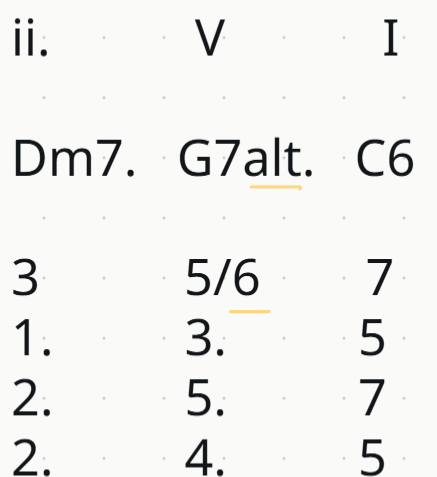Ukulele 2
Published July 12, 2024
Ukulele Self-Study Program: The Roy Smeck Method
Beginner Phase (Weeks 1-4)
Daily Practice (30-45 minutes)
- 10 min: Basic chord shapes (C, G, F, Am)
- 10 min: Simple strumming patterns (down-up, down-down-up)
- 10 min: Right-hand finger exercises (thumb-index alternation)
- 5-15 min: Play simple songs
Key Exercises
- Chord Transitions: Practice smooth changes between C-G-F-Am
- Right-Hand Independence: Practice thumb maintaining steady bass while index finger plays melody notes
- "Ain't She Sweet": Simple version with basic chords
Technical Focus
- Proper ukulele holding position (Smeck often held it flat against his body)
- Clean chord changes without pausing
- Basic down/up strumming with wrist relaxed
Early Intermediate (Weeks 5-8)
Daily Practice (45-60 minutes)
- 10 min: Extended chord vocabulary (7ths, diminished)
- 15 min: Basic fingerpicking patterns
- 15 min: Beginning syncopation exercises
- 10-20 min: Song practice
Key Exercises
- Triplet Strumming: Start slow with down-up-down patterns
- Chord Melody Introduction: Learn to play "Five Foot Two" with melody on top strings
- Early Smeck Study: Learn simplified version of "Laughing Rag"
Technical Focus
- Developing picking hand speed through gradual metronome work
- Clean articulation of individual notes
- Introduction to position shifts
Intermediate (Weeks 9-16)
Daily Practice (60-75 minutes)
- 15 min: Technical exercises (scales, arpeggios)
- 15 min: Syncopated strumming patterns
- 15 min: Chord melody studies
- 15-30 min: Song repertoire
Key Exercises
- Tremolo Technique: Practice rapid index finger movement on single strings
- Harmonics: Practice natural harmonics at 12th, 7th, and 5th frets
- Smeck Study: "Ukulele Blues" with focus on swing rhythm
Technical Focus
- Developing proper swing feel in strumming
- Clean execution of harmonics
- Speed building with metronome (increase by 5 BPM when comfortable)
Advanced Intermediate (Weeks 17-24)
Daily Practice (75-90 minutes)
- 15 min: Speed and dexterity exercises
- 20 min: Advanced chord shapes and voicings

- 20 min: Combination techniques (strumming + picking)
- 20-35 min: Performance pieces
Key Exercises
- Fast Triplet Drills: Practice Smeck's signature three-finger roll technique
- Glissando Practice: Smooth slides between positions
- Smeck Study: "Tiger Rag" with focus on rhythmic variations
Technical Focus
- Developing showmanship elements (dramatic pauses, dynamic control)
- Clean execution of fast passages
- Incorporating body movements with playing (Smeck's performance style)
Advanced (Weeks 25-36)
Daily Practice (90+ minutes)
- 20 min: Technical virtuosity exercises
- 20 min: Complex chord melody arrangements
- 20 min: Improvisation within Smeck's style
- 30+ min: Performance repertoire
Key Exercises
- Rapid Position Shifts: Practice jumping between positions cleanly
- Artificial Harmonics: Combine with regular notes for Smeck's signature sound
- Smeck Study: Full version of "Laughing Rag" with all techniques
Technical Focus
- Performance presentation (facial expressions, body language)
- Speed and clarity in complex passages
- Seamless transitions between techniques
Roy Smeck Signature Techniques
Fast Triplets
- Practice with metronome starting at 60 BPM
- Use three-finger roll (thumb, index, middle) on single strings
- Gradually increase speed with clean articulation
Harmonics
- Start with natural harmonics at 12th fret
- Progress to artificial harmonics (touch string with index 12 frets above played note)
- Practice "Bell-like" pieces like "Aloha Oe" using harmonics
Glissandos
- Practice clean slides between positions
- Incorporate into chord transitions for dramatic effect
- Study Smeck's recordings of "Hindustan" for examples
Showmanship Elements
- Practice playing behind your head (carefully!)
- Develop dramatic pauses and visual flourishes
- Film yourself performing to analyze stage presence
Recommended Repertoire (Progressive Order)
- "Ain't She Sweet" (beginner)
- "Five Foot Two" (early intermediate)
- "Ukulele Blues" (intermediate)
- "Honeysuckle Rose" (intermediate)
- "Tiger Rag" (advanced intermediate)
- "Limehouse Blues" (advanced)
- "Laughing Rag" (advanced - Smeck's signature piece)
- "Twelfth Street Rag" (advanced)
Resources
- Study recordings of Roy Smeck's performances on YouTube
- "The Wizard of the Strings" documentary if available
- Transcriptions of Smeck's arrangements (available in specialty ukulele publications)
- Period sheet music from the 1920s-30s for authentic arrangements
Performance Development Tips
- Speed Building: Always start slowly with metronome, increase by 5 BPM increments only when perfect
- Timing: Record yourself and listen critically for rhythmic consistency
- Swing Feel: Listen to early jazz recordings to internalize authentic swing rhythm
- Stage Presence: Practice in front of mirror to develop Smeck's showmanship elements
- Vintage Sound: Use fluorocarbon strings for clarity, consider a vintage-style ukulele if budget allows
